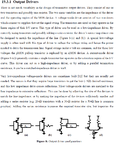Dr. von Rosenstein
Member level 1
Hi colleagues,
simple question:
Is impedance matching important if the components are in low distance to each other?
What I mean is: lets say I want to design a RF transceiver as an integrated circuit. Should the LO and the mixer are impedance matched? In the layout they are very close to each other. The distance is much smaller than the wavelength. Therefore I think, impedance matching can be ignored.
I can not explain it with words (maybe because of my bad english), but in my imagination impedance matching is only important if the distance is greater than a certain fraction of the wavelength. Is this right? Can anyone verify this statement with an explanation?
Thank you for all help!
Rosenstein
simple question:
Is impedance matching important if the components are in low distance to each other?
What I mean is: lets say I want to design a RF transceiver as an integrated circuit. Should the LO and the mixer are impedance matched? In the layout they are very close to each other. The distance is much smaller than the wavelength. Therefore I think, impedance matching can be ignored.
I can not explain it with words (maybe because of my bad english), but in my imagination impedance matching is only important if the distance is greater than a certain fraction of the wavelength. Is this right? Can anyone verify this statement with an explanation?
Thank you for all help!
Rosenstein
